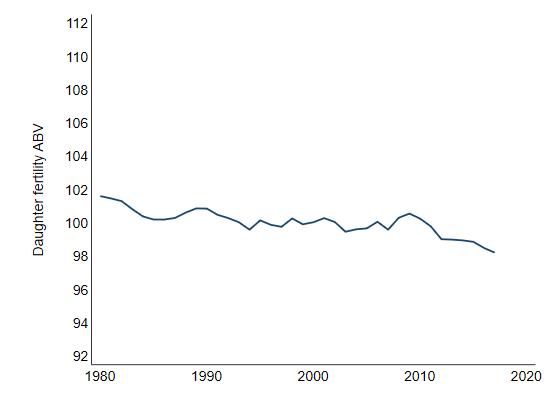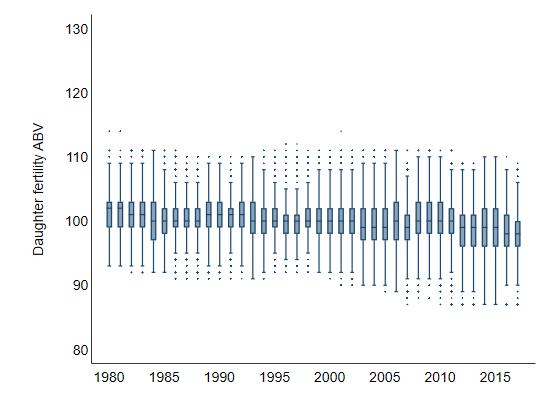
1 minute read
Genetic selection
Genetic selection
Rather than possible inherent differences between breeds in reproductive physiology, one of the main reasons why the fertility of Jerseys is superior to Holsteins is more likely be due to differences in genetic selection and energy metabolism, particularly in early lactation. Up until the 1970s the focus on selection in the dairy industry, particularly Holsteins, was solely on increasing milk production, followed later by selection for conformation. It is only within the past twenty years that the national selection indices of many countries, including several European countries, the United States, Canada, Australia and New Zealand, have become more balanced and fertility and health traits have been included [Miglior et al., 2017]. The mean daughter fertility Australian breeding value for sires of Jersey cows has been on a flat to declining trajectory for the past four decades (Figure 8a). However, the Australian breeding value for sires of Holstein cows was adjusted in the early 2000s and the mean daughter fertility ABV is now on an upwards trajectory (Figure 8b). If these trajectories were to continue, it is possible that the fertility advantage of Jerseys over Holsteins may be reduced. The latest data from DataGene suggest that the mean daughter fertility Australian breeding value for sires of Jersey cows may have bottomed and be beginning to increase.
Advertisement
(a)
(b)
Figure 8. Mean daughter fertility breeding value for sires of cows by cow's year of birth for (a) Jersey cows, and (b) Holstein cows, by cow's year of birth [DataGene, 2021].
The daughter fertility breeding values for sires of cows by cow's year of birth in both Holsteins and Jerseys are highly variable. However, they are become progressively more variable in Holsteins than in Jerseys (Figure 9a,b).


(a)
(b)
Figure 9. Cow's sire daughter fertility breeding values for (a) Jersey cows, and (b) Holstein cows by cow's year of birth; boxes contain the central 50% of values for cows born in each year. [DataGene, 2021].









